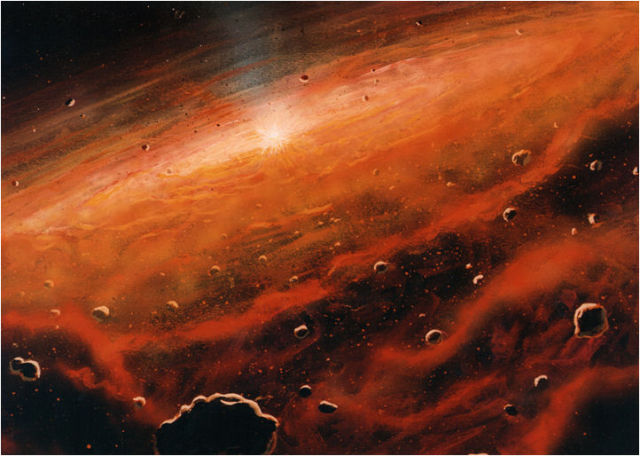Quiescent galaxies with little or no ongoing star formation dominate the population of galaxies with masses above 2 × 1010 times that of the Sun; the number of quiescent galaxies has increased by a factor of about 25 over the past ten billion years (refs 1, 2, 3, 4). Once star formation has been shut down, perhaps during the quasar phase of rapid accretion onto a...
Tag Archives: formation
Tracing haematopoietic stem cell formation at single-cell resolution
Haematopoietic stem cells (HSCs) are derived early from embryonic precursors, such as haemogenic endothelial cells and pre-haematopoietic stem cells (pre-HSCs), the molecular identity of which still remains elusive. Here we use potent surface markers to capture the nascent pre-HSCs at high purity, as rigorously validated by single-cell-initiated serial transplantation. Then we apply single-cell RNA sequencing to analyse endothelial cells, CD45− and CD45+ pre-HSCs in...
Asymmetric catalytic formation of quaternary carbons by iminium ion trapping of radicals
An important goal of modern organic chemistry is to develop new catalytic strategies for enantioselective carbon–carbon bond formation that can be used to generate quaternary stereogenic centres. Whereas considerable advances have been achieved by exploiting polar reactivity, radical transformations have been far less successful. This is despite the fact that open-shell intermediates are intrinsically primed for connecting structurally congested carbons, as their reactivity is...
How old rocks tell us new things about Solar System formation

(credit: NASA)
The most common rocks that fall to Earth are called chondritic meteorites, or chondrites. In fact, the Earth is probably made of them. These are some of the oldest rocks in the Solar System, some dating to its very origin at just over four and a half billion years old. And some of their internal...
Formation of new stellar populations from gas accreted by massive young star clusters
Stars in clusters are thought to form in a single burst from a common progenitor cloud of molecular gas. However, massive, old ‘globular’ clusters—those with ages greater than ten billion years and masses several hundred thousand times that of the Sun—often harbour multiple stellar populations, indicating that more than one star-forming event occurred during their lifetimes. Colliding stellar winds from late-stage, asymptotic-giant-branch stars are...
Formation of new stellar populations from gas accreted by massive young star clusters
Stars in clusters are thought to form in a single burst from a common progenitor cloud of molecular gas. However, massive, old ‘globular’ clusters—those with ages greater than ten billion years and masses several hundred thousand times that of the Sun—often harbour multiple stellar populations, indicating that more than one star-forming event occurred during their lifetimes. Colliding stellar winds from late-stage, asymptotic-giant-branch stars are...
Self-shaping of oil droplets via the formation of intermediate rotator phases upon cooling
Revealing the chemical and physical mechanisms underlying symmetry breaking and shape transformations is key to understanding morphogenesis. If we are to synthesize artificial structures with similar control and complexity to biological systems, we need energy- and material-efficient bottom-up processes to create building blocks of various shapes that can further assemble into hierarchical structures. Lithographic top-down processing allows a high level of structural control in...
Self-shaping of oil droplets via the formation of intermediate rotator phases upon cooling
Revealing the chemical and physical mechanisms underlying symmetry breaking and shape transformations is key to understanding morphogenesis. If we are to synthesize artificial structures with similar control and complexity to biological systems, we need energy- and material-efficient bottom-up processes to create building blocks of various shapes that can further assemble into hierarchical structures. Lithographic top-down processing allows a high level of structural control in...


